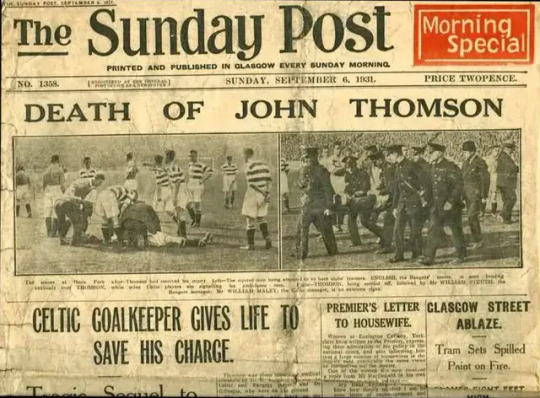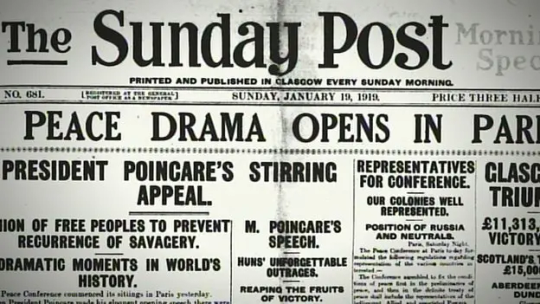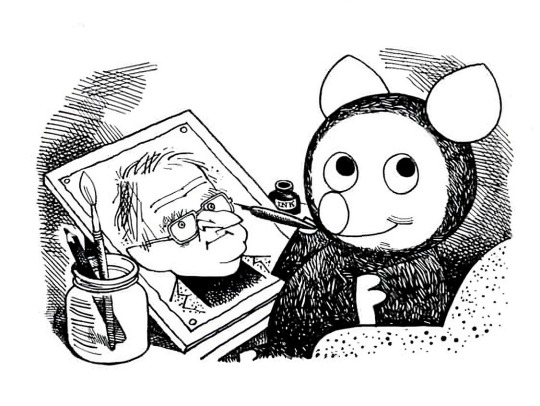#Compton MacKenzie
Explore tagged Tumblr posts
Text

Per me, uno dei piaceri della compagnia del gatto, è la loro devozione alla comodità.
Compton Mackenzie
29 notes
·
View notes
Text
Of dogs, doodlebugs and damn good books
This week we took care of 2 dogs belonging to our extended family thus bringing our inhouse pet count up to 2 dachshunds 1 chihuahua Jack Russell mix and 1 cat. Everyone got along peacefully at “Camp Rusty” playing and sleeping together. Well, the cat did his own thing but wasn’t upset by the extra dogs. In fact I think the cat enjoyed watching them from a window. And one of the dogs enjoyed…

View On WordPress
#art technique#books#cats#Celtic music#Compton Mackenzie#dogs#doodlebug#fine art#gouache#independent bookstores#ink#novel#poem form#poetry#port a beul#Ray Bradbury Reading Program#reading#visual art#visual stories#whimsical art
0 notes
Photo


Faith Compton Mackenzie (deceased)
Gender: Female
Sexuality: Bisexual
DOB: 26 February 1878
RIP: 9 July 1960
Ethnicity: White - English
Occupation: Writer
#Faith Compton Mackenzie#lgbt history#lgbt#lgbtq#lgbt people#female#bisexual#1878#rip#historical#white#writer
60 notes
·
View notes
Text
12 dicembre … ricordiamo …
12 dicembre … ricordiamo … #semprevivineiricordi #nomidaricordare #personaggiimportanti #perfettamentechic
2023: Mario Valdemarin, attore italiano attivo principalmente in teatro, nel cinema ed in televisione fra gli anni cinquanta e gli anni novanta. Fu anche un noto interprete di fotoromanzi. Da giovane con amici studenti si occupò di teatro e di cinema. Agli inizi della carriera di attore ebbe una certa notorietà come campione nella trasmissione televisiva di Mike Bongiorno Lascia o raddoppia?. Per…
#12 dicembre#Ann Reinking#Anne Baxter#Antonio Cifariello#Audrey Mary Totter#Audrey Totter#Charles Van Dell Johnson#Douglas Fairbanks#Eleanor Boardman#Fay Compton#George Montgomery#Jack Cassidy#John Joseph Edward Cassidy#Julius Elton Thomas Ullman#Lilian Emmeline Mackenzie#Mario Valdemarin#Morti 12 dicembre#nato George Montgomery Letz#Odile Marie-Josèphe Léonie Bérard#Odile Rodin#Pierre Yantorny#Pietro Iantorni#Rudolf Ernst Paul Schündler#Rudolf Schündler#Stuart Margolin#Tallulah Bankhead#Tallulah Brockman Bankhead#Van Johnson#Vicente Fernández
0 notes
Text


oliver is reading edward de bono (originator of the term lateral thinking) and sinister street by compton mackenzie (coming of age about an english public school boy who goes to oxford, one of evelyn waugh's favourites) btw if u even care
#saltburn#i have been desperate to figure this out since october#can’t make out the book he’s holding when he overhears farleigh & felix :(#would download the 4k just to check but it’s 14gb and would take 3 days
289 notes
·
View notes
Text







On 19th January 1919 The Sunday Post - home of the 'Broons' & 'Oor Willie' made its first appearance.
The Sunday Post, the Scottish family newspaper was once named the most successful in the world by the Guinness Book of Records.
The paper was the creation of DC Thomson, the family firm behind the third J in Dundee's famed trio of jute, jam and journalism.
It was born out of a thirst for news brought on by the outbreak of World War One, as many local men headed off to fight on the front lines.
The Thomson family had made their fortune in the international shipping industry before branching out into publishing with the purchase of the Dundee Courier and Argus in 1866.
In 1884, 23-year-old David Coupar Thomson was put in charge of the family's growing publishing interests, and in 1905 DC Thomson and Company was set up to publish newspapers.
Although it was home to the daily Courier and Evening Telegraph titles, at the outbreak of war DC Thomson didn't have a Sunday paper.
So to serve the insatiable daily appetite for news of the war effort, a special Sunday edition of the existing Saturday Post was established in 1914.
The fourth battalion of the Black Watch was Dundee's own regiment, and was made up primarily of men who had worked in the three Js - including hundreds from DC Thomson.
With many of their own men serving in the trenches, the firm's newspapers were ideally placed to report on the war, with eye-witness accounts from the "fighter writers" sent back from foreign battlefields.
Even David Thomson himself took his chauffeur and car across to France to visit the front and send back reports.
The "Sunday Special" edition was intended to last for the duration of the war.
But the strength of its journalism and appeal was such that it continued on as a fully-fledged paper of its own, with the first edition of the new Sunday Post hitting the streets on 19th January 1919.
Despite falling out with some socialists when Thomson cracked down on trade union membership after the General Strike of 1926, the Post grew to become one of the country's most popular papers.
Perhaps in response to the collapse of the jute industry at the turn of the "Hungry Thirties" and a depression which saw unemployment in Scotland soar to 28%, the Post launched a "fun section" which produced the paper's most enduring characters.
Created by artist Dudley D. Watkins, Oor Wullie and the Broons made their debut in the first fun section in March 1936, and have been there ever since.
Every Scot was/is aware of Oor Wullie, through the Post, through his Christmas annuals, everybody knew it, 'Jings, crivvens, help mah boab' became part of the Scottish language, part of the dialect. How many of us have used the words ourselves? It is as much a part of our language as the age old favourite "Och Aye the Noo!"
The characters even got involved with the war effort when World War Two broke out in 1939, with Wullie setting up a shy featuring images of Hitler and other Nazi leaders instead of coconuts and Hen and Joe Broon enlisting.
Throughout the war, the Sunday Post became known for giving equal prominence to the headlines of the day and stories and appeals from local people.
Examples include a plea from a Clydeside mother of four for a safe place to take her children during the Blitz, and letters from wives and mothers trying to track down their loved ones.
The paper also campaigned fiercely on behalf of its readership - one long-running campaign targeted large stores of whisky in built-up areas, which it was feared could cause huge explosions if hit by a bomb.
Eventually the editor of the paper was called to London to talk to ministers, and the warehouses were moved to outlying areas. A lot of the whisky was actually moved to Canada, and one of the ships carrying it ran aground off Scotland, and became the source of Compton Mackenzie's famous 'Whisky Galore' - so you can thank the Sunday Post for that.
By 1935 the paper's circulation had grown steadily to 350,000, but in the post-war years it exploded - by the turn of the 1980s it was estimated six out of ten adults in the country were readers.
At its peak the paper was named in the Guinness Book of Records as the most-read paper in the world in its circulation area, with more than 1.7m copies sold every week in a country of five million people.
However, those glory years are long gone. Competition from television, the internet and an increasingly saturated newspaper market have seen the Post's circulation dropping to just under 143,000 in December 2016, with a year-on-year fall of 13.5% recorded for 2016.
In 2014 a weekly magazine supplement was reintroduced. Called IN10, it features entertainment, food, homes, gardens, travel and books as well as The Sunday Post's man in Hollywood, Ross King.
And despite sales being a shadow of their 1980s heyday, the Sunday Post is still as relevant as ever, although newspapers in print all over the country are in decline and I wonder how long some can survive......
26 notes
·
View notes
Text


THE MARCHESA CASATI
Marchesa Luisa Casati: An inspiringly decadent true tale of a bizarre Italian aristocrat. Pet cheetahs, séances and dresses made from lightbulbs, the heiress, socialite and artist's muse Marchesa Luisa Casati led a life every bit as unusual as her outfits.
Luisa, Marchesa Casati Stampa di Soncino (born Luisa Adele Rosa Maria Amman; 23 January 1881 – 1 June 1957), was an Italian heiress, muse, and patroness of the arts in early 20th-century Europe.
Casati was known for her eccentricities that delighted European society for nearly three decades. The beautiful and extravagant hostess to the Ballets Russes was something of a legend among her contemporaries. She astonished society by parading with a pair of leashed cheetahs and wearing live snakes as jewellery.
She captivated artists and literary figures such as Robert de Montesquiou, Romain de Tirtoff (Erté), Jean Cocteau, and Cecil Beaton.[citation needed] She had a long-term affair with the author Gabriele d'Annunzio, who is said to have based on her the character of Isabella Inghirami in Forse che si forse che no (Maybe yes, maybe no) (1910).[citation needed] The character of La Casinelle, who appeared in two novels by Michel Georges-Michel, Dans la fete de Venise (1922) and Nouvelle Riviera (1924), was also inspired by her.
In 1910, Casati took up residence at the Palazzo Venier dei Leoni, on Grand Canal in Venice, owning it until circa 1924. In 1949, Peggy Guggenheim purchased the Palazzo from the heirs of Viscountess Castlerosse and made it her home for the following thirty years. Today it is the Peggy Guggenheim Collection, a modern art museum on the Grand Canal in the Dorsoduro sestiere of Venice, Italy.
Casati's soirées there would become legendary. Casati collected a menagerie of exotic animals, and patronized fashion designers such as Fortuny and Poiret. From 1919 to 1920 she lived at Villa San Michele in Capri, the tenant of the unwilling Axel Munthe. Her time on the Italian island, tolerant home to a wide collection of artists, gay men, and lesbians in exile, was described by British author Compton Mackenzie in his diaries.
Numerous portraits were painted and sculpted by artists as various as Giovanni Boldini, Paolo Troubetzkoy, Adolph de Meyer, Romaine Brooks (with whom she had an affair), Kees van Dongen, and Man Ray; many of them she paid for, as a wish to "commission her own immortality".[citation needed][citation needed] She was muse to Italian Futurists such as F. T. Marinetti (who regarded her as a Futurist) Fortunato Depero, Giacomo Balla (who created the portrait-sculpture Marchesa Casati with Moving Eyes), and Umberto Boccioni. Augustus John's portrait of her is one of the most popular paintings at the Art Gallery of Ontario; Jack Kerouac wrote poems about it and Robert Fulford was impressed by it as a schoolboy.
45 notes
·
View notes
Text
No need for his fatherly prussic acid.....Fred on the journalist who got 'The Well of Loneliness' banned.
In 1932, Fred took a brief break from bemoaning the 'sexual perversion' of post WWI literature to fiercely defend the honour and literary credibility of his friend Radclyffe Hall, author of 'The Well of Loneliness'.
..... it formed the main motif in the wittiest and most amusing farce of the decade, Mr. Compton Mackenzie’s 'Extraordinary Women'. In the same year the topic appeared, no longer pour rire, but as the basis of a serious study, in Miss Radclyffe Hall's 'The Well of Loneliness'. The book had the respectful reception that it deserved as an able and sincere piece of work, it was spoken of with high commendation in so responsible a journal as 'The Times Literary Supplement,'
He goes on to describe the beginnings of the extraordinary campaign that was waged against the book:
..... a certain journalist (the time of the year being the "silly season of early August) started a crusading campaign against it. We must, of course, credit him with being absolutely honest and conscientious in his intentions; the subject of the book genuinely shocked him, and he assured his readers that he would prefer to put a phial of prussic acid into a girl’s hands than let her read it. It seemed to him most dangerous in tendency, and likely to corrupt the soul of a normal girl. Better the prussic acid which would only kill her body. So violent was the agitation that he raised that the Home Secretary intervened and, after a trial before a police-magistrate, in which witnesses who wished to speak on behalf of the book were not given a hearing, the order was made that it should be withdrawn from circulation, and the appeal against this decision failed.
Next he quotes 'the science' of the time which is echoed Hall's own book:
It is an admitted fact that many, if not most young girls and boys alike are first physically attracted by those of their own sex: the schwarms between girls, the school-friendships of boys are the awakenings of their uncomprehended passions, and must be regarded as normal not abnormal. Then with the maturity of their adolescence, the enormous percentage of these develop on normal, heterosexual lines, but there is a time when the emotional sex of both is in the balance: a girl may under a very strong stimulus, which puts homosexuality before her in an alluring and attractive light, be inclined over to that side, and her balance be permanently upset.
And finally he points out that given that it is "one of the saddest books in the world, painting, as it does, in the most convincing colours the misery and loneliness, the sense of being a pariah that awaits the unfortunate women of this type",
...it would be far more likely to make any girl who had wavering inclinations, to turn with a mixture of horror and, it is to be hoped, pity, from the curse of such a predisposition. The book is its own antidote against the poison it was supposed to contain: it is impossible to imagine a stronger deterrent. Indeed, if the journalist mentioned above wanted to save any girl from what he thought might be the effect of its perusal, there was no need for his fatherly prussic acid: the perusal of the book itself would produce the desired effect.
'As We Are: a modern revue,' EF Benson, 1932
#E.F. Benson#As We Are#Memoirs#Radclyffe Hall#The Well of Loneliness#Litererary connections#The sense of being a pariah#This is as personal as it gets
5 notes
·
View notes
Text
Rogues and vagabonds, by Compton Mackenzie.
Description
Tools
Cite this
Main AuthorMackenzie, Compton, 1883-1972.Language(s)English PublishedNew York, George H. Doran company [1927] Physical Description208 p. 19 cm.
2 notes
·
View notes
Text
Nobody who is not prepared to spoil cats will get from them the reward they are able to give to those who do spoil them. – Compton Mackenzie
0 notes
Text
Large sub-surface granite formation signals ancient volcanic activity on Moons dark side
A team of scientists led by Matthew Siegler, an SMU research professor and research scientist with the Planetary Science Institute, has published a study in Nature that used microwave frequency data to measure heat below the surface of a suspected volcanic feature on the Moon known as Compton-Belkovich. The team used the data to determine that the heat being generated below the surface is coming from a concentration of radioactive elements that can only exist on the Moon as granite. Granites are the igneous rock remnants of the plumbing systems below extinct volcanos. The granite formation left when lava cools without erupting is known as a batholith. “Any big body of granite that we find on Earth used to feed a big bunch of volcanoes, much like a large system is feeding the Cascade volcanoes in the Pacific Northwest today,” Siegler said. “Batholiths are much bigger than the volcanoes they feed on the surface. For example, the Sierra Nevada mountains are a batholith, left from a volcanic chain in the western United States that existed long ago.” The lunar batholith is located in a region of the Moon previously identified as a volcanic complex, but researchers are surprised at its size, with an estimated diameter of 50 kilometers. Granite is somewhat common on Earth, and its formation is generally driven by water and plate tectonics, which aid in creating large melt bodies below the Earth’s surface. However, granites are extremely rare on the Moon, which lacks these processes. Finding this granite body helps explain how the early lunar crust formed. “If you don’t have water it takes extreme situations to make granite,” Siegler said. “So, here’s this system with no water, and no plate tectonics — but you have granite. Was there water on the moon — at least in this one spot? Or was it just especially hot?” Research team members included Jianquing Fang, from the Planetary Science Institute; Katelyn Lehman-Franco, Rita Economos and Mackenzie White from SMU; Jeffrey Andrews-Hanna from Southwest Research Institute; Michael St. Clair and Chase Million from Million Concepts; James Head III from Brown University and Timothy Glotch from Stony Brook University. The work was funded through NASA’s Lunar Data Analysis Program and work related to the Lunar Reconnaissance Orbiter Diviner Lunar Radiometer. Data for the study was obtained from public data released from two Chinese lunar orbiters, Chang’E-1 in 2010 and Chang’E-2 in 2012, carrying four-channel microwave radiometer instruments. The original Chang’E?1 and Chang’E-2 MRM data can be downloaded from: http://moon.bao.ac.cn/index_en.jsp. Siegler will be presenting the team’s research at the upcoming Goldschmidt Conference, scheduled for July 9-14 in Lyon, France.
0 notes
Text

Whiskey Galore! (1949). Based on the true story of the SS Politician (renamed SS Cabinet Minister in the movie) which ran aground and then sank in 1941.
#1949#whiskey galore!#movie poster#basil radford#gordon jackson#james robertson justice#michael balcon#compton mackenzie#alexander mackendrick
20 notes
·
View notes
Photo

Per me, uno dei piaceri della compagnia del gatto, è la loro devozione alla comodità.
Compton Mackenzie
26 notes
·
View notes
Text
12 dicembre … ricordiamo …
12 dicembre … ricordiamo … #semprevivineiricordi #nomidaricordare #personaggiimportanti #perfettamentechic
2022: Stuart Margolin, è stato un attore e regista statunitense. Margolin ha dichiarato di aver condotto un’infanzia da “teppista”, è stato espulso dalle scuole pubbliche del Texas ed è stato mandato dai suoi genitori in un collegio. La sua carriera nel mondo del cinema è iniziata prima degl’anni ’70 e ha diretto programmi televisivi dall’inizio degli anni ’70. Margolin ha scritto diverse canzoni…

View On WordPress
#12 dicembre#Ann Reinking#Anne Baxter#Antonio Cifariello#Audrey Mary Totter#Audrey Totter#Charles Van Dell Johnson#Douglas Fairbanks#Eleanor Boardman#Fay Compton#George Montgomery#Jack Cassidy#John Joseph Edward Cassidy#Julius Elton Thomas Ullman#Lilian Emmeline Mackenzie#Morti 12 dicembre#nato George Montgomery Letz#Odile Marie-Josèphe Léonie Bérard#Odile Rodin#Pierre Yantorny#Pietro Iantorni#Rudolf Ernst Paul Schündler#Rudolf Schündler#Stuart Margolin#Tallulah Bankhead#Tallulah Brockman Bankhead#Van Johnson#Vicente Fernández
1 note
·
View note
Text
In Memoriam: Cartoonist and jazz musician Wally Fawkes (aka “Trog”)
A tribute to Wally Fawkes, aka "Trog", the hugely influential cartoonist, co-creator of "Flook"

View On WordPress
#Barry Norman#Barry Took#Bob Raymond#Compton MacKenzie#Daily Mail#Douglas Mount#downthetubes News#Flook#George Melly#Humour Comics#Humphrey Lyttelton#Leslie Illingworth#Private Eye#Punch#The Observer#Trog#Wally Fawkes
3 notes
·
View notes